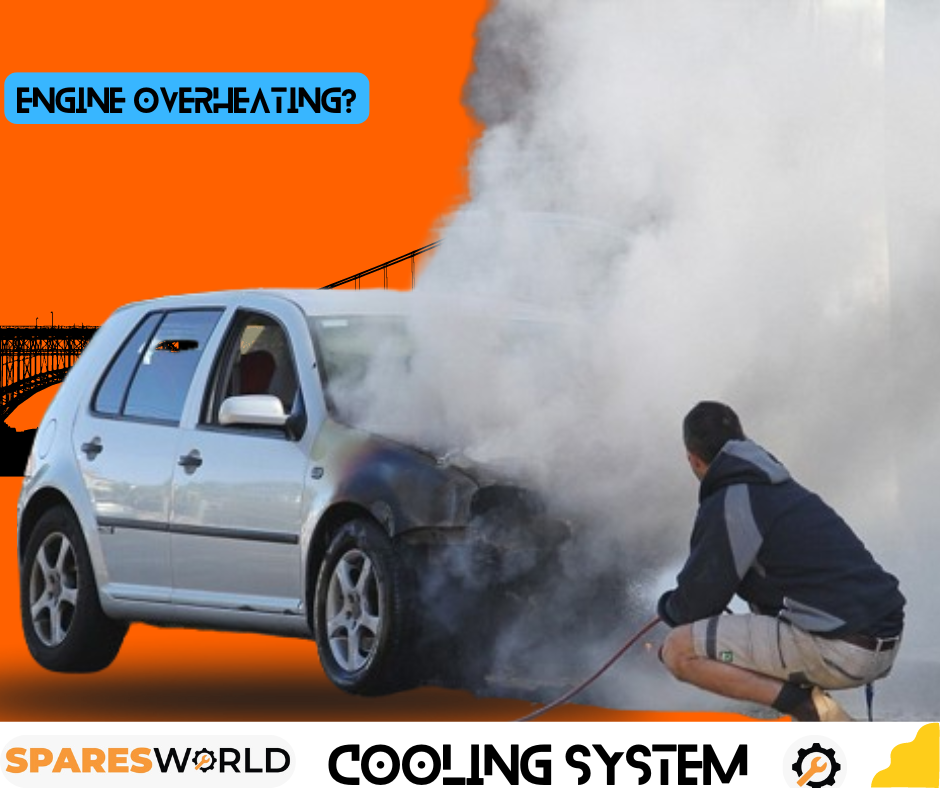Understanding the Function of Your Car’s Cooling System

Your car’s cooling system plays a critical role in maintaining engine temperature and preventing overheating, which can cause severe damage to your vehicle. It’s a complex network of parts working together to regulate heat, ensuring your engine runs efficiently and safely. In this blog, we’ll break down the essential components of your car’s cooling system, such as the radiator, water pump, thermostat, and hoses, and explain their functions in keeping your engine cool.
Key Components of the Cooling System
-
Radiator The radiator is the heart of the cooling system. It’s responsible for dissipating heat from the engine coolant before it’s recirculated back into the engine. Hot coolant flows through the radiator, where it passes through thin tubes and fins, allowing air to cool the fluid. This process helps regulate engine temperature and prevents overheating, especially during long drives or heavy traffic.
-
Water Pump The water pump is the driving force behind the cooling system. It circulates coolant through the engine and radiator, ensuring a constant flow of coolant. Without the water pump, the coolant would remain stagnant, leading to overheating. The water pump is typically driven by a belt and is crucial for maintaining the cooling cycle.
-
Thermostat The thermostat acts as a temperature regulator for your engine. It monitors the engine’s temperature and controls when coolant should flow to the radiator. When the engine is cold, the thermostat remains closed, allowing the engine to warm up quickly. Once the engine reaches its optimal temperature, the thermostat opens, allowing the coolant to flow through the radiator and cool down the engine.
-
Coolant (Antifreeze) Coolant, also known as antifreeze, is a liquid mixture that absorbs heat from the engine and transfers it to the radiator. Coolant is essential for preventing the engine from overheating in hot conditions and freezing in cold temperatures. It also contains additives that prevent corrosion and lubricate the system, prolonging the life of components like the water pump.
-
Radiator Hoses Radiator hoses carry the coolant between the engine and the radiator. There are typically two hoses: the upper hose carries hot coolant from the engine to the radiator, and the lower hose returns the cooled fluid back to the engine. These hoses are built to withstand high pressure and temperature, but over time, they can wear down, crack, or leak, which can lead to engine overheating.
-
Cooling Fans Cooling fans help draw air through the radiator when the car isn’t moving fast enough to generate airflow, such as during idling or slow traffic. This additional air movement helps cool the radiator and prevent the engine from overheating in stop-and-go conditions.
How the Cooling System Works
When your car’s engine runs, it generates a significant amount of heat. The cooling system’s job is to regulate this heat by circulating coolant through the engine and radiator. Here’s a simplified version of the process:
- The water pump pushes coolant through the engine block, where it absorbs heat.
- The heated coolant moves to the radiator through the upper hose.
- As the coolant flows through the radiator’s thin tubes, the heat is released into the air with the help of the cooling fans.
- Cooled fluid is then returned to the engine through the lower hose, and the process repeats as needed.
- The thermostat regulates when the coolant moves between the engine and the radiator, ensuring the engine maintains its ideal temperature.
The Importance of Maintaining Your Cooling System
Regular maintenance of your cooling system is vital for preventing engine overheating and extending the life of your vehicle. Here’s why:
- Prevent Engine Overheating: If any part of the cooling system fails, such as the water pump or radiator, your engine could overheat, causing damage to internal components like the head gasket or cylinders.
- Improve Engine Efficiency: A properly functioning cooling system ensures that your engine runs at the optimal temperature, improving fuel efficiency and overall performance.
- Avoid Costly Repairs: Neglecting the cooling system can lead to severe engine damage, requiring costly repairs or even engine replacement.
Signs Your Cooling System Needs Attention
Watch for these warning signs that your cooling system may need maintenance or repair:
- The temperature gauge consistently runs hot
- Coolant leaks under the vehicle
- Frequent engine overheating
- Steam coming from under the hood
- A low coolant warning light on your dashboard
Why Choose Sparesworld for Cooling System Parts?
At Sparesworld, we offer a wide selection of high-quality cooling system parts, including radiators, water pumps, thermostats, and hoses. Our products are sourced from trusted manufacturers, ensuring that you get reliable and durable components for your vehicle. Whether you need a replacement part or are looking for expert advice on maintaining your cooling system, Sparesworld is here to help.
Conclusion
Your car’s cooling system is essential for keeping your engine at the right temperature, preventing costly damage, and ensuring optimal performance. Regularly checking and maintaining key components like the radiator, water pump, and hoses is critical for long-term reliability. For all your cooling system needs, trust Sparesworld to provide top-quality parts that keep your vehicle running smoothly.
Need cooling system parts? Visit Sparesworld today for expert advice and premium-quality components!

 Loading..
Loading..